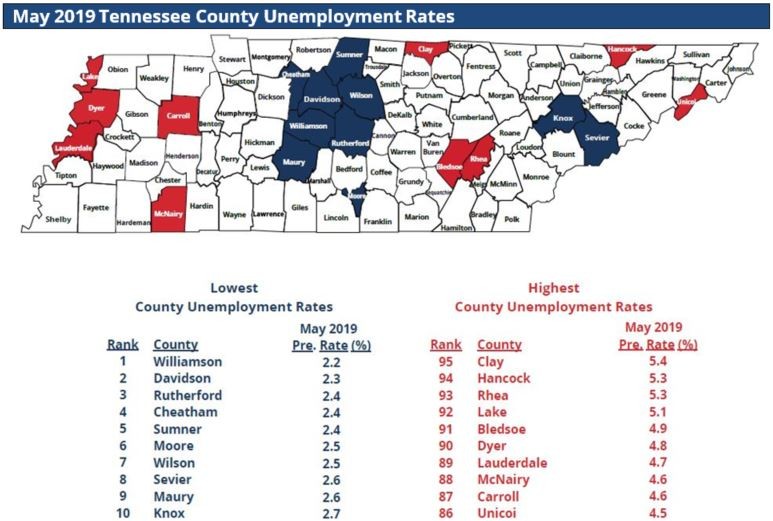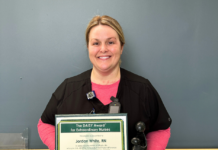By Michelle Price
Special to the UCBJ
NASHVILLE – Unemployment rates rose across the Upper Cumberland in every county except Clay, which despite a 0.2 of a percentage point decrease maintained the highest unemployment in the state for the third consecutive month.
“It’s not unusual to see a minimal increase in local unemployment rates at the start of the summer season,” explained Tennessee Department of Labor and Workforce Development (TDLWD) Commissioner Jeff McCord. “May is a month of transition; many high school and college graduates enter the workforce for the first time during the month and most school personnel start their summer break in May.”
Tennessee’s statewide unemployment rate experienced a slight uptick in May to 3.3 percent.For three consecutive months, the state had previously recorded an all-time low of 3.2 percent. The number of unemployed statewide rose by 2,800 to 109,400 while the labor force increased by 18,200 to 3.3 million.
Nationally, the unemployment rate remained unchanged at 3.6 percent, mirroring April’s national rate. It maintained the lowest jobless rate since December 1969, despite the number of unemployed persons increasing by 64,000 to 5.8 million because employment increased by 113,000 to 156.7 million.
Smith County, at 2.7 percent, and Cannon County, at 2.8 percent, remained the only counties within the Upper Cumberland to have rates below 3 percent, with Smith County barely missing the 10th lowest rate in the state by eight one-hundredths of a percentage point. Clay County had the highest rate in the state at 5.4 percent, which is a 0.2 percentage point decrease from the previous month and remains the only U.C. county with a rate over 4 percent.
Rates across the remaining U.C. counties include Cumberland (3.7), DeKalb (3.6), Fentress (3.5), Jackson (3.9), Macon (3.1), Overton (3.3), Pickett (3.8), Putnam (3.2), Van Buren (3.8), Warren (3.6) and White (3.3).
County unemployment rates are not seasonally adjusted, while the state and national rates use the seasonal adjustment to eliminate outside influences on the statistics.








